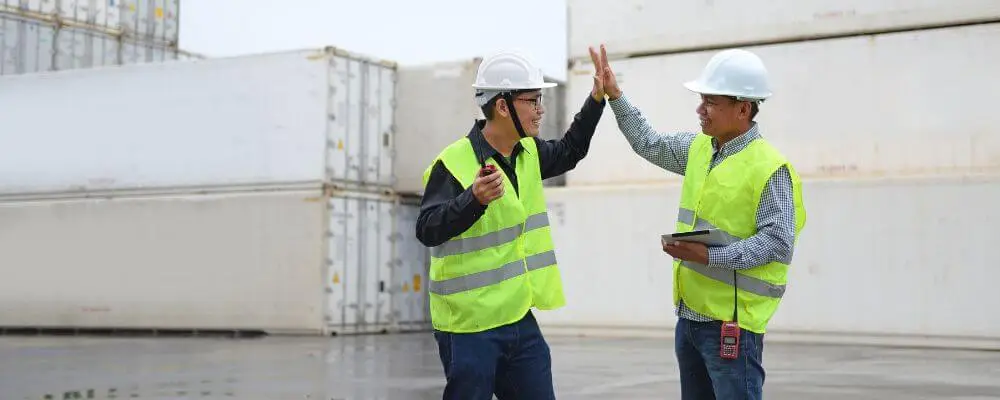Safety culture represents an integral aspect of an organization’s overall well-being, reflecting the values, attitudes, competencies, and patterns of behavior that determine the commitment to, and the style and proficiency of, an organization’s health and safety management. Within this framework, it is crucial to recognize both the positive and negative indicators that shape the safety culture of a workplace.
Positive indicators are emblematic of a thriving safety environment where there’s a collective responsibility toward health and well-being. These manifest through open communication, active employee participation in safety initiatives, consistent investments in safety training, proactive accident prevention, clear policies, and visible commitment from all levels of management.
On the other hand, negative indicators signal underlying problems that can potentially lead to a hazardous work environment. These can range from high sickness and accident rates to inadequate safety procedures, poor management of contractors, lack of training, reluctance to report safety concerns, and a prevalent blame culture.
This comprehensive overview will delve into these indicators, providing detailed insights into what they entail and why they are essential for any organization aspiring to foster a robust safety culture. By understanding these factors, businesses can take measured steps to enhance safety measures and create a more conducive working environment for all involved.

What is Safety Culture?
Safety culture refers to the collective attitudes, beliefs, values, and behaviors shaping how an organization prioritizes health and safety. It emerges from a combination of individual mindsets and group dynamics that define an organization’s commitment to maintaining a safe environment. A robust safety culture is marked by open communication based on mutual respect, a shared belief in the importance of safeguarding health, and a universal confidence that preventive measures are effective.
In a thriving safety culture, there is active participation from all levels of the organization, from senior management to the frontline workforce. While legal responsibilities may rest with the employer, genuine safety success hinges on collective engagement and a shared belief in the value and effectiveness of safety protocols. This ensures that safety remains paramount, even when financial or performance goals come into play.
Characteristics Of A Successful Health And Safety Culture
A successful health and safety culture is one in which the safety and well-being of employees, contractors, visitors, and the public are prioritized and consistently maintained. The following are key characteristics of such a culture:
- Proactive Leadership: The most successful health and safety cultures are driven by leaders who prioritize and actively support health and safety. Such leadership sets the standard and instills a sense of responsibility across every level.
- Prioritization of Health and Safety: Like any other crucial business function, health and safety should receive equivalent attention, resources, and priority to ensure a safe working environment.
- Management Accountability: Supervisors and managers should have clear roles and responsibilities related to health and safety. They should have adequate training and resources to manage these tasks effectively.
- Employee Engagement: All employees should be actively involved in health and safety initiatives regardless of their position. Their insights, when consulted, can provide valuable feedback and improve safety measures.
- Unified Long-term Vision: A successful culture is built on a shared understanding and acceptance of health and safety standards, with everyone committed to a collective, long-term vision.
- Comprehensive Risk Management: Organizations must identify potential hazards, assess them, and implement control measures. This proactive approach minimizes risks and potential incidents.
- Clear Safety Guidelines: Every organization should have a health and safety policy that is optimistic, forward-looking, and combines both short-term actions with long-term strategies.
- Measurable Goals: Realistic targets related to health and safety should be established. These goals, which serve as performance indicators, should be regularly reviewed and updated as necessary.
- Continuous Learning and Communication: Employees should be regularly trained and informed about health and safety measures. An open line of communication promotes a culture where employees feel secure to voice their concerns.
- Routine Monitoring: Consistent checks on equipment, processes, and employee behaviors ensure that safety protocols are followed and discrepancies are promptly addressed.
- Thorough Incident Analysis: Every accident or near-miss provides a learning opportunity. Detailed investigations help in understanding root causes and refining safety measures.
- Periodic Assessment: The health and safety measures should be periodically assessed to ensure their relevance and effectiveness. Feedback from employees during these evaluations can provide unique perspectives and further strengthen the culture.
A thriving health and safety culture arises from leadership commitment, employee involvement, clear policies, regular training, and continuous assessment. It’s a dynamic entity that requires attention, adaptation, and engagement from everyone in the organization.

Negative Indicators Of Health And Safety Culture
A strong health and safety culture protects workers, ensures legal compliance, and maintains a positive organizational reputation. The absence of this culture can manifest in various ways. Here are some negative indicators of health and safety culture in a workplace:
1. High Sickness, Ill-Health, and Absentee Rate
A substantial absenteeism rate, particularly due to sickness or ill health, points towards a workplace environment where employees might feel physically or mentally threatened. Prolonged absences hint at potential hazards or stressors in the workplace that could be causing harm. This directly impacts business operations and sets a tone of apprehension among the remaining workforce, which could erode trust in the management’s ability to ensure their well-being.
2. High Rate of Accidents & Incidents
An uptick in accidents or near-misses usually indicates either an absence of robust safety procedures or a lack of enforcement of existing guidelines. Such a pattern can create an atmosphere of anxiety, hampering productivity and job satisfaction. In addition, frequent accidents might bring increased attention from regulatory bodies, potentially leading to penalties or business interruptions.
3. Perception of a Blame Culture
When a company’s response to mistakes is more punitive than corrective, it fosters a culture where employees are hesitant to report errors or concerns. Concealing errors out of fear of retribution deprives the organization of critical learning opportunities and can escalate minor issues into significant crises over time. This could stifle innovation and restrict the company’s growth in the long run.
4. High Insurance Premiums
Soaring insurance premiums, especially those concerning health benefits or worker compensation, can serve as an alarm for organizational leaders. These rising costs often respond to increased claims resulting from workplace incidents. Not only do they strain the company’s financial resources, but a reputation as a high-risk employer can deter potential employees and might even impact business collaborations.
5. High Staff Turnover
If employees frequently leave, especially due to health or safety concerns, it paints a picture of an organization that doesn’t prioritize its workers’ welfare. The continual need to hire and train replacements can disrupt operations and potentially deter future recruits. Moreover, it might raise eyebrows among long-standing business partners, causing them to reassess the firm’s stability.
6. Lack of Resources
Effective health and safety protocols require a delicate balance of financial, human, and infrastructural resources. These areas’ inadequacies can render even the most well-intentioned safety guidelines ineffective. Overworked staff, outdated safety equipment, or budgetary constraints can introduce vulnerabilities into the system, putting employees at risk and possibly leading to regulatory breaches.

7. Prevalence of Unsafe Practices
When unsafe behaviors or risky practices are regularly observed in the workplace, it can indicate a systemic problem. Employees might not receive the proper training, or the training methods may be ineffective. This trend can also suggest that the existing safety guidelines might be too cumbersome or unrealistic, causing employees to bypass them. Such practices endanger the workers and expose the organization to legal risks and tarnish its reputation. Organizations must identify and address the root causes of these unsafe practices to create a safer, more compliant work environment.
8. Stress, Anxiety, and Low Morale
A pervasive atmosphere of stress, anxiety, and low morale among employees indicates deeper, underlying issues. Overburdened employees can become disengaged or burned out, whether from excessive work demands, insecurity about job safety, or a perception of being undervalued. This not only affects their individual well-being but can also have broader organizational repercussions. High-stress levels can lead to more mistakes, lower productivity, and strained interpersonal relationships within the team. Addressing these issues often requires holistic strategies, focusing on job demands and creating a supportive, inclusive, and communicative environment.
9. Frequent Complaints and Grievances
Regular complaints and grievances about safety and health issues, especially when left unaddressed, can erode trust between employees and management. It showcases an organization’s potential reluctance or inability to prioritize and act on workers’ concerns. This dismissive approach can lead to disillusioned employees, who may become less likely to report issues in the future, further jeopardizing workplace safety. It’s essential for organizations to have a responsive feedback mechanism and to demonstrate that they value and act upon employee feedback.
10. Lack of Commitment from Management
Management’s priorities often set the tone for the entire organization. A consistent pattern of prioritizing profits, production, or other operational metrics over employee safety sends a powerful message about the company’s values. This lack of commitment can trickle down, making employees feel that their well-being isn’t valued. Over time, this can have profound implications, from high staff turnover to potential legal liabilities, and can even impact the bottom line as demotivated employees become less productive.
11. Non-compliance with Safety Regulations
Flouting or overlooking established health and safety laws is a glaring indication of a negative workplace safety culture. It risks immediate harm to employees and exposes the organization to legal penalties, financial liabilities, and reputational damage. This non-compliance can suggest an organizational mindset where shortcuts are acceptable or immediate gains outweigh long-term sustainability and employee well-being.
12. Regular Procedural Violations
Consistent deviations from established safety protocols highlight a culture of complacency or disregard for established procedures. Such an environment can make accidents or mishaps more likely as employees don’t adhere to or maybe even unaware of the safe way to execute tasks. For the organization, this means increased risks and potential disruptions to operations. It’s imperative for companies to regularly assess, reinforce, and, if necessary, adapt their safety procedures to ensure they’re both effective and followed consistently.

13. Poor Contractor Management
The manner in which an organization manages its contractors often reflects its broader approach to workplace safety. Contractors, by virtue of being external entities, might not be inherently aligned with a company’s safety culture. If not properly vetted or supervised, they can introduce practices that don’t meet the established safety standards of the organization. This lack of alignment jeopardizes their safety and exposes regular employees to increased risks. Proper management ensures that contractors undergo thorough vetting processes, receive necessary training on company-specific safety protocols, and are continually monitored to maintain compliance.
14. Inadequate Safety Protocols
The basic infrastructure for safety—ranging from emergency exits to the availability of first-aid kits—is fundamental to any workplace. When such essential features are missing or not maintained, it reflects a significant oversight in the organization’s safety planning. A deficient safety infrastructure exposes workers to immediate risks and indicates a reactive rather than proactive approach to potential threats. It is paramount for an organization to regularly assess its safety infrastructure against both regulatory standards and potential in-house risks, making adjustments as required.
15. Poor Communication
Clear and consistent communication is the backbone of a robust safety culture. When communication breaks down, employees may be unaware of potential risks or not fully understand safety protocols. This lack of knowledge creates an environment ripe for accidents. But beyond just protocols, effective communication also establishes trust. When employees feel that they are kept in the loop and that their feedback is valued, they’re more likely to actively engage in and advocate for safe practices. Companies must ensure regular safety updates, clear reporting lines for concerns, and open feedback loops to maintain a safety-conscious environment.
16. Lack of Training
Training provides employees with the knowledge and skills to safely perform their tasks. Without adequate training, even the most detailed safety protocols can become meaningless, as employees might not know how to implement them. Furthermore, as industries evolve and new risks emerge, periodic retraining ensures that employees remain updated on the latest safety practices. A lack of consistent and comprehensive training indicates that an organization may prioritize operational efficiency over its workforce’s safety.
17. Neglect of Accident Investigation
Accidents, even minor ones, offer valuable insights into vulnerabilities within an organization’s safety protocols. By neglecting to investigate these incidents, companies miss opportunities to identify root causes, make necessary improvements, and prevent future occurrences. A lackadaisical approach to accident investigation might lead to repeated incidents, escalating costs, and a damaged reputation. Organizations must view accident investigations not as post-mortem analyses but as proactive tools for continuous improvement.
18. Reluctance to Report Concerns
An environment where employees hesitate to voice their safety concerns is a red flag. This reluctance can stem from fear of retaliation, the belief that concerns will be dismissed, or a perceived lack of channels to voice these concerns. This silence can lead to undiscovered or unaddressed risks in the workplace. To foster a culture where employees feel safe to report concerns, organizations must create clear, anonymous reporting mechanisms, ensure no repercussions for raising issues, and actively demonstrate that reported concerns are taken seriously and acted upon.

Positive Indicators of Health and Safety Culture
A workplace that truly values the health and safety of its employees typically exudes certain qualities and practices. Recognizing these indicators can help organizations and workers understand the robustness of a company’s safety culture.
- Open Reporting Culture: In an environment where employees feel comfortable voicing safety concerns without the apprehension of backlash, it signifies trust between the workforce and management. This mutual respect allows for a more transparent evaluation of potential risks.
- Consistent Communication: When communication channels between employees and management remain clear and open, especially regarding safety matters, it ensures everyone remains informed and updated about potential hazards and protective measures.
- Proactive Safety Approach: Organizations prioritizing accident prevention over post-accident responses lead the way in safety culture. By emphasizing foresight, these organizations reduce risks before they manifest.
- Employee Engagement: Encouraging employees to participate in safety initiatives demonstrates that the organization values their insights. An active role in safety programs empowers workers to take charge of their well-being.
- Emphasis on Feedback: Valuing employee feedback on safety concerns signifies that the organization is open to improvement and acknowledges that frontline workers have firsthand knowledge of everyday risks.
- Resources for Safety: Providing workers with the necessary tools, training, and support ensures they can perform their tasks without compromising safety.
- Dynamic Safety Procedures: A workplace that frequently revisits and refines its safety procedures showcases adaptability and a commitment to continuous improvement.
- Collaboration with Regulatory Bodies: A healthy rapport with health and safety regulatory agencies indicates an organization’s willingness to stay updated and compliant with industry best practices.
- Clear Safety Policies: Accessibility to well-defined safety guidelines ensures that employees are always aware of the expected safety norms and protocols.
- Management’s Accountability: When senior management is answerable for the safety environment, it underlines the organization’s top-down commitment to a hazard-free workplace.
- Regular Hazard Inspections: Proactive workplace inspection to identify and rectify hazards in real-time showcases an organization’s tangible commitment to safety.
- Effective Accident Response: A comprehensive accident investigation system helps uncover root causes and implement preventive measures to thwart future incidents.
- Rehabilitation Programs: Having structures in place to reintegrate injured workers back into the workforce underscores the organization’s commitment to employee well-being beyond immediate safety concerns.
- Innovation in Safety: Investing in safety research and development indicates an organization’s dedication to pioneering advanced safety measures and technologies.
- Employee-led Safety Innovations: Encouraging employees to suggest safety enhancements reflects the value placed on worker insights and the continuous pursuit of a safer environment.
- Stress-Free Environment: A serene and structured workplace, devoid of undue stress, often indicates efficient operations and a safety-first approach.
- Visible Safety Commitment: Tangible and visible demonstrations of safety commitment from the highest management echelons inspire employee confidence and foster a safety-first culture.
- Active Safety Committees: Well-established and promoted safety committees emphasize the structured approach to safety discussions and implementations.
- Orderly Workspaces: Clean and organized work areas reduce physical hazards and promote mental well-being, emphasizing the organization’s holistic approach to safety.
- Knowledgeable Employees: Ensuring workers know potential risks in their workspaces and the associated protective measures indicates comprehensive training and effective communication.
- Emergency Preparedness: The presence of robust emergency response procedures underscores the organization’s preparedness to address unforeseen challenges effectively.
In summary, these indicators provide a holistic view of an organization’s commitment to safety. Emphasizing these aspects fosters a safe work environment and contributes to overall productivity and employee satisfaction.
Conclusion
In conclusion, safety culture is not merely a set of rules or guidelines but a reflection of an organization’s core values and practices regarding the well-being of its employees. The presence of positive indicators underscores a proactive, caring, and efficient environment where safety is a collective responsibility. Conversely, the manifestation of negative indicators points to potential vulnerabilities, requiring immediate attention to prevent adverse outcomes.
Recognizing these positive and negative indicators provides organizations a roadmap to assess, improve, and maintain a dynamic safety culture, ensuring a sustainable and secure workplace for everyone involved. As the adage goes, a successful company is only as strong as its weakest link, and in the realm of safety culture, ensuring every link is fortified is paramount.


